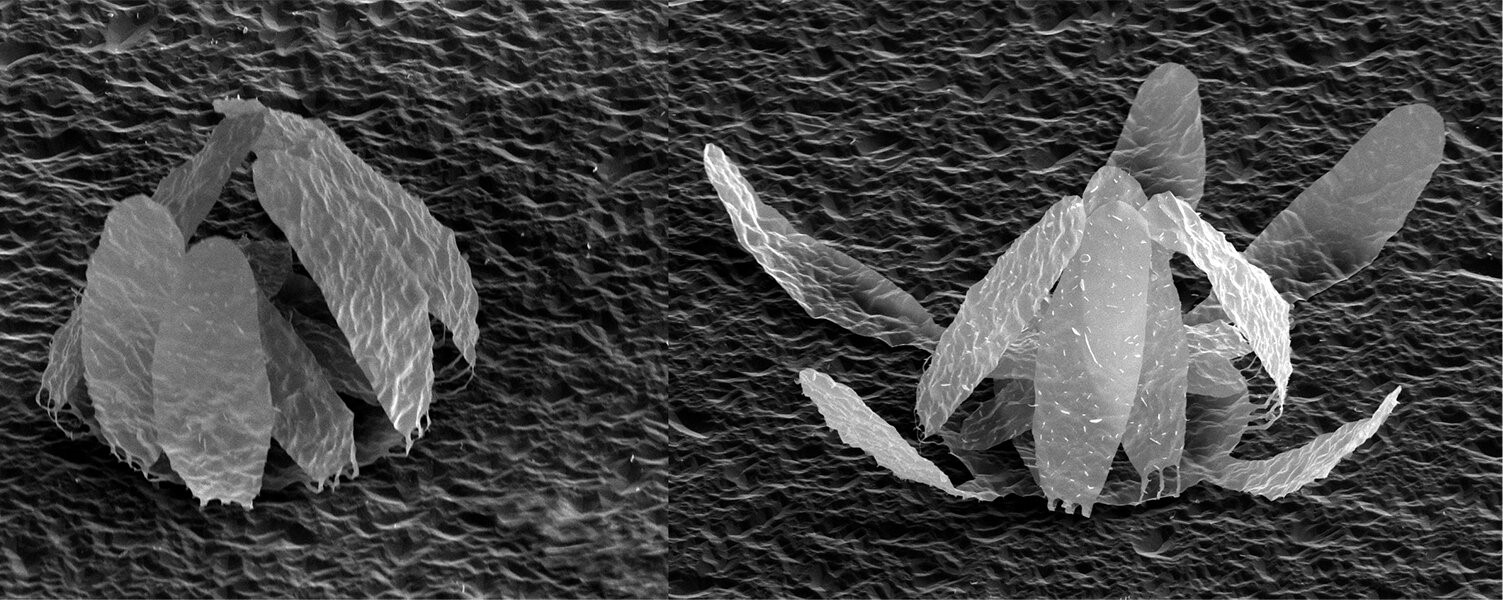Nanoscale Ripples Hold the Key to Enhancing Thin Material Properties in Electronics
When materials are engineered at the nanometer scale, just a few atoms thick, thermal energy at room temperature can induce structural ripples. These ripples can influence the mechanical properties of thin materials, potentially limiting their application in electronics and other critical systems.
New research confirms theoretical models suggesting that elasticity is scale-dependent, meaning the elastic properties of a material change based on the size of the material.

Figure 1. Electron micrograph of nanometer-thick kirigami structures showcasing the benefits of rippled metamaterials for enhanced 3D architectural control.
Assistant Professor Jian Zhou, Ph.D. '18, teamed up with researchers from Argonne National Laboratory, Harvard University, Princeton University, and Penn State University for a recent study published in the Proceedings of the National Academy of Sciences [1]. Figure 1 shows Electron micrograph of nanometer-thick kirigami structures showcasing the benefits of rippled metamaterials for enhanced 3D architectural control.
The team utilized a semiconductor manufacturing process to create alumina structures just 28 nanometers thick—over 1,000 times thinner than a human hair—on a silicon wafer. These structures were designed with thermal-like static ripples and tested with lasers to observe their behavior. To eliminate potential stress that could influence the results, cantilevers were used to hold the wafers during testing.
The results aligned with the theoretical models proposed by a research group led by Harvard Professor David R. Nelson, who contributed to the study. "This is the first time we can precisely characterize the ripple effect on thin films," said Zhou, a faculty member in the Department of Mechanical Engineering at the Thomas J. Watson College of Engineering and Applied Science.
Understanding the effects of ripples is crucial for developing microelectronics, micromechanical devices, microscopic robots, and other technologies that could revolutionize fields like medicine and computing [2]. In a playful demonstration, Zhou and his team used their findings to shape the material into nanoscopic flowers. "Once we understand the mechanical properties, we can create more precise structures, like micro-robotics, with controlled geometries," Zhou explained. "For example, we could apply real-time excitation to change the shape, similar to how a Transformer works."
References:
- https://phys.org/news/2025-03-nanoscale-ripples-key-thin-material.html
- https://www.binghamton.edu/news/story/5436/new-research-examines-how-nanoscopic-ripples-affect-material-properties
Cite this article:
Janani R (2025), Nanoscale Ripples Hold the Key to Enhancing Thin Material Properties in Electronics, AnaTechMaz, pp. 172
















